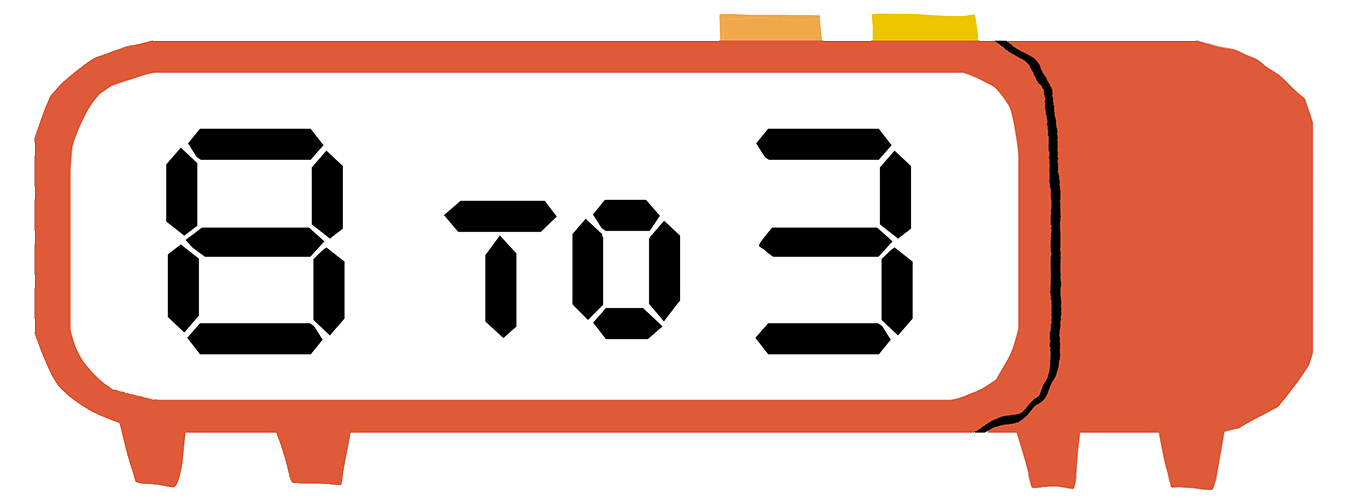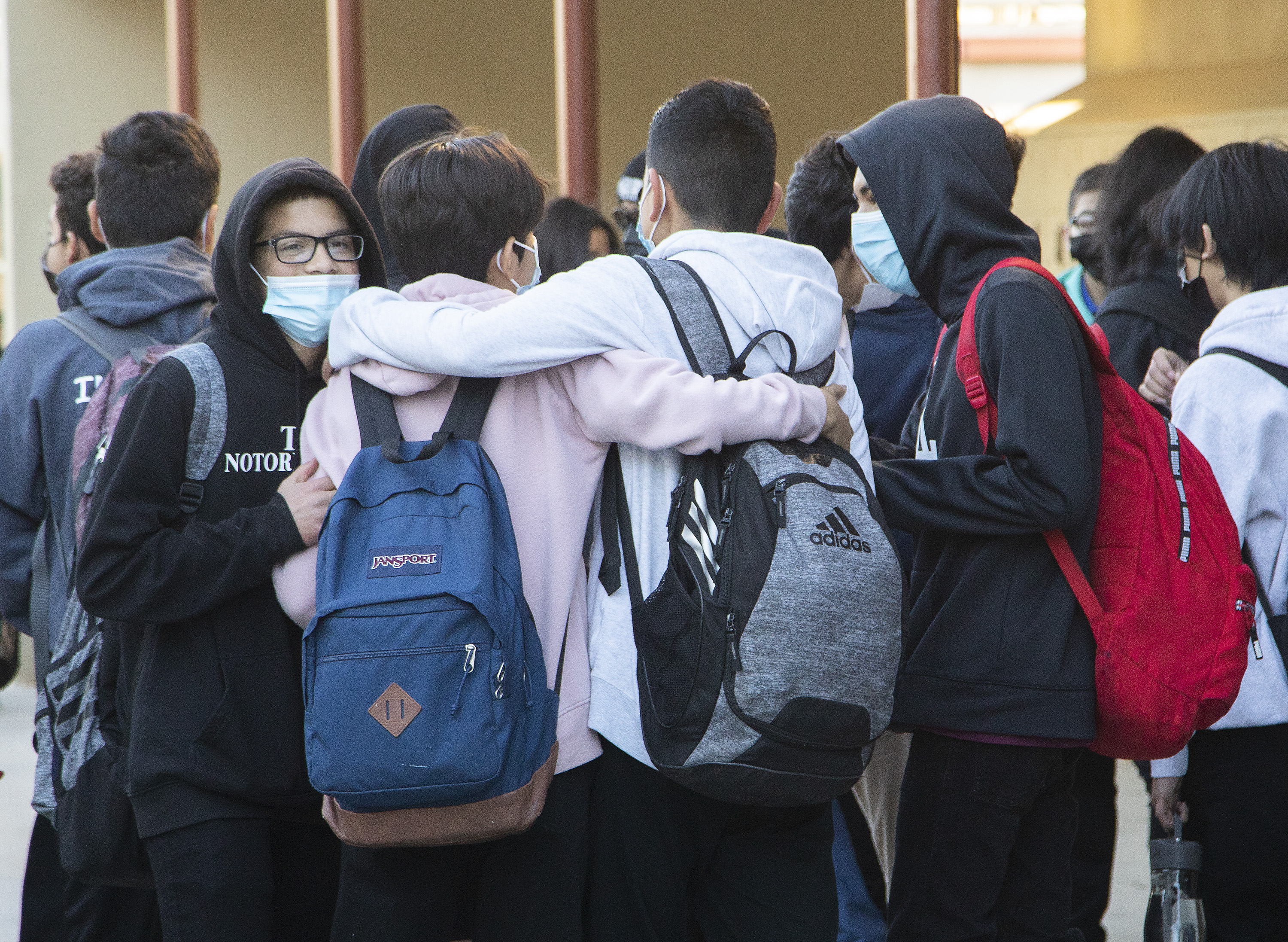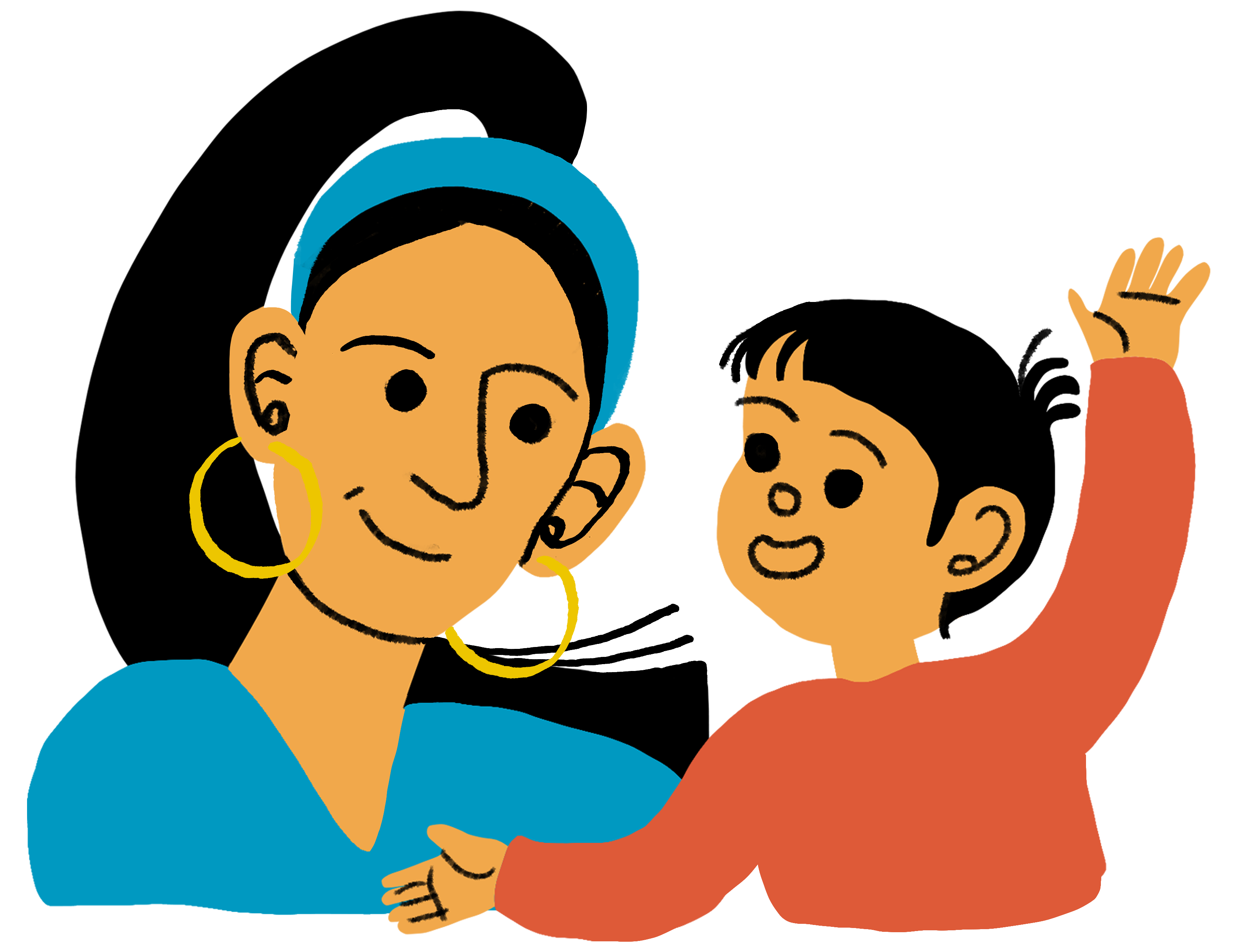Hello! This is Deborah Netburn, the faith and spirituality reporter for the L.A. Times, filling in for Laura Newberry.
Last week my 13-year-old son was able to take his mask off at school for the first time in 10 months.
Like all California students, he still has had to wear his mask inside school, of course. But rules were relaxed in L.A. Unified: Masks can come off when students are outside — eating lunch or taking part in P.E. And more freedom is coming soon. Officials announced Monday that indoor masking would no longer be mandatory at California schools as of March 12, although their use is still recommended. Surely my son and his friends would be flooded with relief to remove those annoying, sweaty, acne-inducing masks at least for part of the day, right?
Wrong.
As it turns out, most of the eighth-graders at my son's school chose to keep their masks on last week, even when outside. And not for the reasons you might imagine.
"I think people are still too self-conscious to take off their mask," said one of his friends as I drove them to school.
Another friend agreed: "It's like, I'm not used to seeing your face, and I'm not used to you seeing mine."
There are 1,100 students at my son's middle school, and he was only there for six months before it shut down in March of 2020. Like most middle school and high school students in LAUSD, he spent all of the 2020-21 school year attending classes on Zoom, and when he returned to in-person school this year, the mask mandate was firmly in place. He's been seeing his friends maskless after school for months, but halfway through his eighth-grade year, he still doesn't know what many of his other classmates look like behind their masks.
His friends told me that the phrase "mask fishing" has been making its way around the school. I'd heard of catfishing — setting up a fake online profile to trick someone who is looking for a relationship. Mask fishing is the notion that you look cuter than you actually are when half of your face is covered by a mask.
"People think that when they take the mask off they don't look as attractive as when they have it on, so they are afraid to take it off," my son's friend said. "A lot of our friends suffer from that."
I understand where they're coming from. I've had the experience of meeting someone with a mask on and feeling surprised when the mask comes off and they look vastly different then I'd imagined. (And if I'm being honest, usually not as good.)
The phenomenon has been documented in at least two scientific studies that show people are perceived as more attractive when they wear face masks compared with when they show their whole face, said Erez Freud, a professor at the Center for Vision Research at York University in Ontario, Canada. The studies show the effect is especially strong for people who are perceived as less attractive without their masks.
Freud's not sure why this is the case, but one possibility is that our brains fill in the parts of the face that we can't see with what we think are "normal" or "average" features, he said. Other studies have shown that if you take a whole bunch of faces and average the size of the noses, mouths, chins, eyes — the composite face is usually considered attractive.
In the case of my son and his friends, their classmates are likely not imagining them with acne and braces behind their masks. But they are 13 and 14 years old: The acne and braces are there.
To find out how sad I should feel that the middle schoolers I talked to weren't excited to take off their masks, I called Andrew Fuligni, director of the Adolescent Development Lab at UCLA.
His take: Not sad at all.
"They don't know what is going to happen; they don't know what to expect," he said. "They haven't done this kind of thing completely uncovered for a long time. It's new to them and that's really cool. I think it's fantastic."
Fuligni said it made sense my son and his friends would be reluctant to remove their masks in front of one another at first. These kids didn't just go through a pandemic over the past two years, they went through puberty. Taking off the mask is like an unveiling for them.
"Their faces are going to look different," he said. "They are going to have acne, some may have whiskers, their voices are different."
He acknowledged that there might be some kids who find the idea of taking their masks off so anxiety-inducing that they won't want to go to school. In that case, he recommends parents talk to the school psychologist or their pediatrician, but he's confident that most kids will rapidly adapt to showing their faces in the school setting.
"That's the thing about the adolescent brain," he said. "It's designed to learn and grow and adapt to new circumstances. They are going to do beautifully."
I was happy to hear it, and not entirely surprised. The kids in my car have shown a lot of resiliency over the past two years.
As I pulled up to the school, I asked whether they felt all the restrictions of the past two years had deprived them of something fundamental in their childhood.
"It wasn't that bad," said one of the friends as she pulled her backpack out of the car. "It's just middle school."
Now here's what else is happening ...
News broke today that indoor masking would no longer be mandatory at California schools and childcare facilities after March 11 — allowing potentially millions of K-12 schoolchildren to go maskless in the classroom for the first time in months.
However, the full impact of the move remains to be seen. Local officials retain the option of keeping mask rules in place, and school districts will face their own decisions on when to take that step — contingent on county health orders and labor agreements.
Los Angeles Unified appears bound by an agreement with its teachers union to retain masking at least through the end of the current school year. But district officials could, if they wish, bring the matter back to the bargaining table.
Although heated online discourse and in-person protests at campuses and school board meetings have perhaps painted the picture that California parents are universally ready to move away from mandatory masking, the reality is far murkier.
Nearly two-thirds of California voters, including a majority of parents, support mask and vaccination mandates in K-12 schools, according to a poll conducted this month by the Institute of Governmental Studies at UC Berkeley and co-sponsored by the L.A. Times.
Among parents of school-age children, 61% approved when asked whether they supported California's requirement that "students, teachers, and staff in K-12 public schools wear masks while in school this year." Thirty-seven percent disapproved.
A smaller majority of parents, 55%, approved of California's plan to add COVID-19 to the list of vaccinations required for schoolchildren once the COVID-19 inoculations are fully approved by the Food and Drug Administration; 42% disapproved.
The same poll also revealed that confidence in California public schools has steeply declined in the wake of the pandemic compared with a decade ago.
Statewide, about 21% of voters give the state's public schools an A or B; in 2011 it was 27%. Meanwhile, D or F grades statewide rose 15 percentage points in the last decade, from 13% to 28%.
In the city of Los Angeles, 18% of voters give schools an A or B; about 1 in 3 voters give D or F marks to public schools.
Hoping to rebuild that loss of trust, new Los Angeles schools Supt. Alberto Carvalho announced an ambitious "100-Day Plan" last week, during his second week at the helm of the L.A. Unified School District.
Carvalho said he intended to expand access to early childhood education as well as explore initiatives including creating spring break and winter break academies at schools serving students with the highest needs, creating optional year-round educational institutions. He also spoke about expanding the school year by providing additional days of instruction and professional development.
As part of the plan, the district will also begin to develop steps to relax some coronavirus safety measures, including mandatory testing, in alignment with public health experts.
Looking ahead to college, the University of California drew the largest and most diverse applicant pool ever despite pandemic challenges, according to preliminary data.
Overall, UC drew 210,840 first-year applications, a 3.5% increase over last year, with more students seeking admission from California, other states and other countries for fall 2022.
Applicants from California numbered 132,337, led again by Latinos at 38%, followed by Asian Americans at 31%, white students at 21%, Black applicants at 7%, American Indians at 1% and Pacific Islanders at less than 1%.
And finally, if you are struggling with how to talk to kids about the Ukraine invasion, this story offers some advice. I remember similar stories coming out when the pandemic first sent us into lockdown, and the message from the experts is largely the same: Be honest, and follow your kid's lead. Some kids will want to talk about it. Some will not. Either way is fine.
Also remember that although the invasion, for U.S. kids, is playing out several thousand miles from home, social media and television coverage can make it seem just next door. That's why some experts warn against leaving TV coverage on constantly as the invasion plays out.
Enjoying this newsletter?
Consider forwarding it to a friend, and support our journalism by becoming a subscriber.
Did you get this newsletter forwarded to you? Sign up here to get it in your inbox every week.
What else we're reading this week
It appears the subject of masks in schools dominated discussion last week. The California debate has been ongoing and controversial, and although the UC Berkeley/L.A. Times polls showed a majority of parents supported mandates, opinions have still been polarizing. San Francisco Chronicle
Throughout the country, districts are facing pressure to drop mask requirements. As more states lift mandates for restaurants and businesses, many school requirements remain — and school board meetings are heated. The Wall Street Journal
Keeping campuses running amid one pandemic crisis after another is the school principal, who is called upon to do it all. "Teacher shortage? It's a principal problem. Not enough bus drivers, cafeteria workers or janitorial staff? Principal problem. Poor academic performance by kids who fell behind while learning online? Major principal problem." USA Today
Get the lowdown on L.A. politics
In this pivotal election year, we've launched a new newsletter. The focus: Los Angeles politics and the people who run this town. With deep dives and insider tidbits, we'll let you know what matters and why.
Sign up for L.A. on the Record.





No comments:
Post a Comment
Keep a civil tongue.